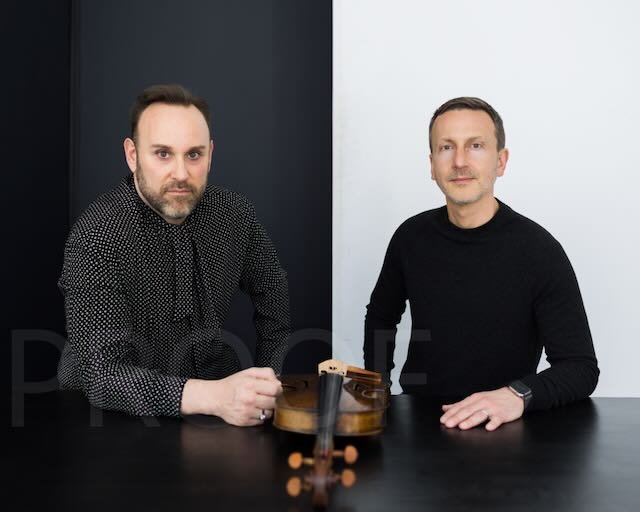How Investing at Strumenti.com Helps Musicians
National Symphony Concertmaster Nurit Bar-Josef, with the G.B. Guadagnini, 1773, the ex-Grumiaux, ex-Silverstein (photo by Jerome Skiscim)
The right instrument will make all the difference to a talented musician. They can sound more vibrant, be more natural to play, and overall improve the virtuosity of their performance.
When a musician is able to play a truly great instrument, the instrument will guide the musician into doing more to accomplish the goals of the music. They will be inclined to a certain type and quality of tone production and the instrument will respond in a quick, clear manner in which the musician can instinctively adjust. Instruments of the highest quality have richer overtones which allow for better intonation resulting in more expressiveness. The musician will be able to change the color of the sound, the emotion of the music with a full range of dynamics and nuance that you do not ever find or is much more difficult to access in lesser instruments.
Selecting the right instrument for a particular musician is similar to finding a soul-mate. The process can be challenging, particularly when the instrument needed to make the match is far outside the financial access of the musician.
In fact, the cost of quality string instruments (particularly violins, violas, cellos and bows) has rapidly grown out of reach for most professional musicians. Everyone has heard of Stradivarius, and that the purchase prices of instruments made by Antonio Stradivari at auction are now regularly in the millions. There are dozens of other European makers from the 1600s through early 1900s that are sought after by string musicians. These instruments have also been appreciating in value - often costing 100s of thousands of dollars, if not millions.
The value appreciation of these instruments has made them attractive to private collectors and to museums, as investments and for wealth preservation. One study showed that the historical average annual appreciation of fine stringed instruments over 40 years to be consistently in the range of 3.7-6.9%, and another study found that a sample of old Italian instruments appreciated at a mean rate of 6.67% per year from 1980 to 2009. These numbers represent a wide range of instruments and quality. The highest quality individual makers have been experiencing an estimated annual appreciation of 10-15% per year for the last several decades. A low correlation to stock markets makes them popular among wealthy individuals as long term wealth preservation vehicles stored in private collections and museums.
Consolidation of these instruments into non-musician investor hands means that fewer and fewer of them are ever heard in performance. A traditional solution to this problem has been for wealthy patrons to buy an instrument and lend it for use to an artist, sometimes on a nonprofit basis. Organizations exist to help wealthy donors with the “matchmaking” and loaning of the instruments. However there are few people who can afford to buy an entire instrument and are willing to donate the use of their instruments.
Strumenti.com cofounders Jim Kelly and Steve Obenski
Strumenti.com solves this problem by enabling patron-investors to purchase fractional shares of a fine stringed instrument for as little as $10,000. We do this by taking advantage of relatively recent changes in “crowdfunding” laws in the US that allow us to advertise these investments to the broader public.
Using our 20 year experience in the industry, we will identify and facilitate the acquisition of fine and rare instruments while matching each to the needs of an artist. In addition, we will ensure that the violins, violas and cellos are publicly played. Patron-investors will receive updates on the use and status of the instrument, including when and where they can hear it in a live performance. Patron-investors can enjoy not only the potential for long term financial rewards, but also the knowledge they are making a difference in the career of a promising musician.
Strumenti will decide when and how to sell the instruments, typically within 5-10 years but in some cases as long as 15 years. Investors will not be able to sell their interests until the instrument as a whole is sold; however, we will help facilitate transfers of their interests to appropriate music-related non-profits, Donor Advised Funds, and other charitable vehicles.
Our vision is ultimately to make a meaningful and positive impact on the world of string music and all its communities. Our approach helps increase access to these instruments as investments. It quite literally gets patrons “invested” in the music, which will help musicians everywhere by adding a new reason to attend a performance.
We estimate there are tens of thousands of instruments in this range in the world. We believe we can purchase 100 instruments in the next 5 years, influence the careers of 100+ artists, and to attract as many as 1000+ unique patron-investors during that time.
If this sounds interesting to you, we invite you to join us on this journey by signing up for our email list.


